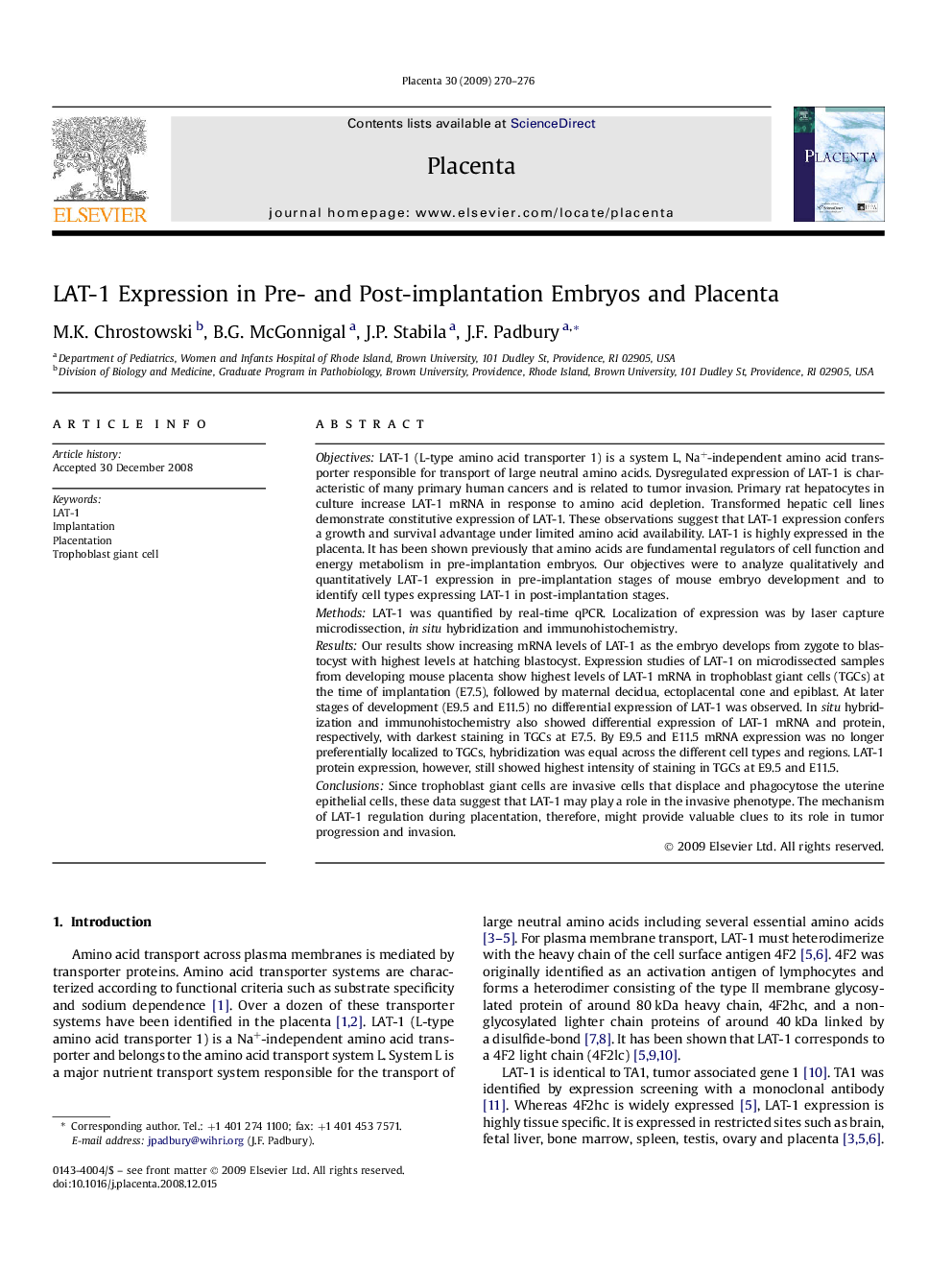| Article ID | Journal | Published Year | Pages | File Type |
|---|---|---|---|---|
| 2789928 | Placenta | 2009 | 7 Pages |
ObjectivesLAT-1 (L-type amino acid transporter 1) is a system L, Na+-independent amino acid transporter responsible for transport of large neutral amino acids. Dysregulated expression of LAT-1 is characteristic of many primary human cancers and is related to tumor invasion. Primary rat hepatocytes in culture increase LAT-1 mRNA in response to amino acid depletion. Transformed hepatic cell lines demonstrate constitutive expression of LAT-1. These observations suggest that LAT-1 expression confers a growth and survival advantage under limited amino acid availability. LAT-1 is highly expressed in the placenta. It has been shown previously that amino acids are fundamental regulators of cell function and energy metabolism in pre-implantation embryos. Our objectives were to analyze qualitatively and quantitatively LAT-1 expression in pre-implantation stages of mouse embryo development and to identify cell types expressing LAT-1 in post-implantation stages.MethodsLAT-1 was quantified by real-time qPCR. Localization of expression was by laser capture microdissection, in situ hybridization and immunohistochemistry.ResultsOur results show increasing mRNA levels of LAT-1 as the embryo develops from zygote to blastocyst with highest levels at hatching blastocyst. Expression studies of LAT-1 on microdissected samples from developing mouse placenta show highest levels of LAT-1 mRNA in trophoblast giant cells (TGCs) at the time of implantation (E7.5), followed by maternal decidua, ectoplacental cone and epiblast. At later stages of development (E9.5 and E11.5) no differential expression of LAT-1 was observed. In situ hybridization and immunohistochemistry also showed differential expression of LAT-1 mRNA and protein, respectively, with darkest staining in TGCs at E7.5. By E9.5 and E11.5 mRNA expression was no longer preferentially localized to TGCs, hybridization was equal across the different cell types and regions. LAT-1 protein expression, however, still showed highest intensity of staining in TGCs at E9.5 and E11.5.ConclusionsSince trophoblast giant cells are invasive cells that displace and phagocytose the uterine epithelial cells, these data suggest that LAT-1 may play a role in the invasive phenotype. The mechanism of LAT-1 regulation during placentation, therefore, might provide valuable clues to its role in tumor progression and invasion.
